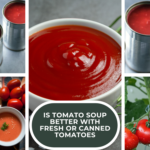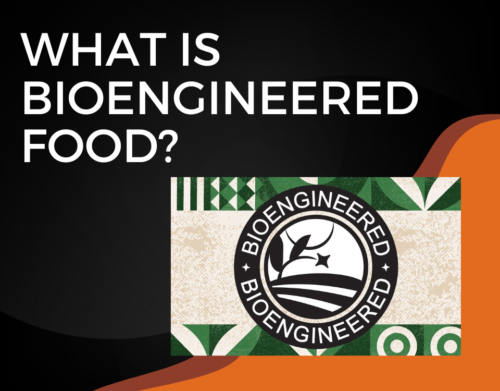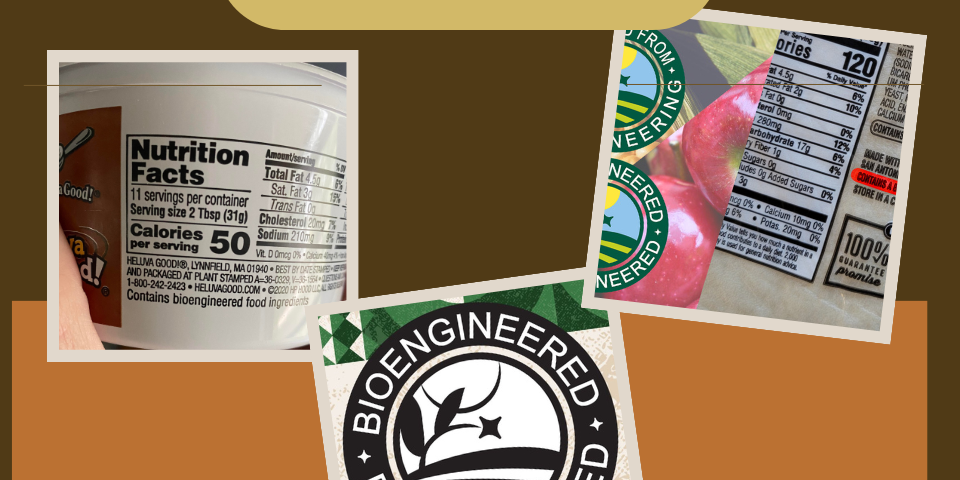
Is Tomato Soup Better With Fresh or Canned Tomatoes
April 30, 2024
Simple korean hotteok recipe
June 5, 2024The Truth About Bioengineered Food Ingredients
Bioengineered food, also called genetically modified food (GMOs), is now common in what we eat. The truth about Bioengineered Food ingredients is that, these foods are genetically changed to improve traits like resisting pests, boosting nutrition, and lasting longer. While government agencies say they are safe, some independent studies question potential risks. Concerns include antibiotic-resistant genes in some GMO crops and exposure to herbicides used on these plants.
List of bioengineered foods:
- Alfalfa
- Apple (ArcticTM varieties)
- Canola
- Corn
- Cotton
- Eggplant (BARI Bt Begun varieties)
- Papaya (ringspot virus-resistant varieties)
- Pineapple (pink flesh varieties)
- Potato
- Salmon (AquAdvantage)
- Soybean
- Squash (summer)
- Sugarbeet
- Sugarcane (Bt insect-resistant varieties)12.
What is Bioengineered Food?
Bioengineered food, also called genetically modified food (GMOs), is food that has had its genes changed to resist pests, withstand herbicides, or improve nutrition and shelf life. This is common in plants like soy, corn, and cottonseed, but also in animals like pigs and salmon to help them grow faster and resist diseases. Since bioengineered crops were first developed, they have become very common. Today, about 94% of soybeans and 90% of corn in the U.S. are GMOs.
According to the National Academy of Sciences and the FDA, bioengineered foods are safe to eat. However, some independent studies have found mixed results and question their safety. Some GMO crops have genes that resist antibiotics, raising concerns that eating these foods might contribute to antibiotic resistance in humans. Also, many GMO plants are designed to survive herbicides, meaning they are often treated with high levels of weed killers like glyphosate, which can leave residues in the food.
The safety of bioengineered foods is still debated. If you want to avoid GMOs, you can limit foods with GMO ingredients, eat locally, or buy 100% organic.

Introduction
Bioengineered foods, commonly known as genetically modified organisms (GMOs), have become increasingly prevalent in our diets. But what exactly are these ingredients, and how do they impact our health and the environment
Genetically modified organisms (GMOs) are food items whose DNA has been modified using genetic engineering techniques. These modifications aim to enhance growth, nutritional content, sustainability, pest resistance, and ease of farming. GMO crops are prevalent in the United States, constituting at least 90% of soy, cotton, and corn production
The Truth About Bioengineered Food Ingredients
Bioengineered food is commonly known as genetically modified food or GMOs. Most Common Bioengineered (GMO) foods are bioengineered plants, including soy, corn, and cottonseed. Livestock animals like pigs and salmon have also been genetically modified to speed up growth and enhance disease resistance.
Definition and Background
What Are Bioengineered Food Ingredients?
Bioengineered food ingredients, often referred to as genetically modified organisms (GMOs), are products of biotechnology where the genetic makeup of plants or animals is altered to exhibit certain traits, such as improved nutritional content, pest resistance, or longer shelf life. This process may involve the insertion or deletion of genes.
Background
The history of bioengineered foods started in the early 1990s when they were first introduced into our food supply. In 1988, the first genetically modified enzymes were approved for use in food production. By 1994, the Flavr Savr tomato became the first genetically modified food available for sale. Since then, crops like soybeans, corn, and canola have been commonly bioengineered, especially in countries like the United States.
Bioengineered foods have to pass safety checks before they can be sold. In the United States, starting in 2022, foods with detectable genetically engineered ingredients must be labeled as “bioengineered.” This labeling helps consumers make informed decisions about what they are eating.
The Science Behind Bioengineering
How Bioengineered Ingredients Are Made?
Bioengineered ingredients are created through a process that alters the genetic material of a food source, such as crops or fruits, to achieve desired traits like improved nutritional content, pest resistance, or longer shelf life. This process involves the insertion or deletion of genes using biotechnology.
Here’s a simplified overview of how bioengineered ingredients are made:
- Identification: Scientists identify genes that confer desired traits, such as insect resistance or enhanced nutritional content.
- Modification: These genes are then added, changed, or removed in the plant or animal using biotechnological methods.
- Safety Checks: The changes are tested to ensure they are safe and achieve their intended purpose.
For example, scientists might add a gene from a bacterium into a plant to help it resist pests or diseases. A well-known success is the genetically engineered papaya, which became resistant to the ring spot virus and saved Hawaii’s papaya industry in the 1990s.
Benefits of Bioengineering
Bioengineering offers several benefits, such as:
- Increased Crop Yields: By making plants more resistant to pests and diseases, bioengineering can lead to higher crop production.
- Improved Nutritional Content: Certain bioengineered foods are modified to contain more vitamins and minerals. For instance, “Golden Rice” is engineered to produce beta-carotene, which can combat vitamin A deficiency.
- Environmental Benefits: Reduced need for pesticides and herbicides, thanks to pest-resistant and herbicide-tolerant crops.
- Longer Shelf Life: Some bioengineered foods are designed to last longer, reducing food waste.
- Reduced Pesticide Use: Some bioengineered plants are resistant to pests, minimizing the need for chemical pesticides.
Health and Safety Concerns
Potential Health Risks
The potential health risks of bioengineered food ingredients, commonly known as GMOs, have been a topic of debate. Most well-known organizations and research indicate that GMO foods are safe and sustainable. However, some independent research and opinions express concerns about potential risks.
Here are some of the potential health risks that have been discussed:
- Antibiotic Resistance: Some GMO crops have been modified with genes resistant to antibiotics, leading to concerns that consuming this genetic material could increase the risk of antibiotic resistance in humans1.
- Allergenicity: There is a possibility that introducing a gene into a plant could create a new allergen or cause an allergic reaction in susceptible individuals1.
- Herbicide Residue: Most bioengineered plants are designed to withstand herbicides, which means they are often exposed to these chemicals. There are concerns about the presence of herbicide residues in the final food product and their impact on human health.
Regulatory Oversight
As for regulatory oversight, bioengineered foods must meet safety standards set by various regulatory bodies. In the United States, the USDA requires that foods with detectable GMO ingredients must be labeled as “bioengineered food” as of 2022. This labeling helps consumers make informed choices about the foods they purchase.
Environmental Impact
Positive Environmental Effects?
Bioengineered food ingredients, commonly known as GMOs, offer several environmental benefits due to the specific traits they are designed to express:
- Pest Control: Many GMO crops have been modified to include a gene that protects them from pests and insects, which reduces the need for chemical pesticides.
- Fewer Pesticides: The use of GMO technology has led to a worldwide reduction in chemical pesticide use by 8.3%. This also lowers greenhouse gas emissions since farmers don’t need to spray their fields as often.
- Improved Survival and Greater Yield: GMO crops that can withstand stressful conditions like droughts and resist diseases lead to higher yields for farmers.
- Increased Nutritional Value: Genetic modifications can enhance the nutritional content of foods. For example, golden rice, which is high in beta-carotene, was developed to help prevent blindness in areas with vitamin A deficiencies.
These benefits contribute to more sustainable agriculture by lowering the environmental impact of farming and helping to ensure food security as the global population grows.
While bioengineered food ingredients, also known as GMOs, offer several benefits, there are also some environmental concerns associated with their use:
Negative Environmental Concerns:
- Biodiversity Loss: The widespread planting of GMO crops can lead to a reduction in biodiversity. This happens when a single GMO crop variety replaces a multitude of traditional varieties, potentially impacting ecosystems and the species that depend on them.
- Gene Transfer: There is a risk of GMO genes transferring to non-GMO crops or wild relatives, which could affect natural plant populations and potentially create “superweeds” resistant to herbicides.
- Pesticide Resistance: Over time, pests can develop resistance to the toxins produced by GMO crops, leading to the need for stronger or more pesticides, which can harm the environment.
- Impact on Non-Target Organisms: Some GMO crops engineered to be toxic to pests might also harm non-target organisms, such as beneficial insects, soil microbes, and birds.
These concerns emphasize the need for careful management and regulation of GMO crops to minimize potential negative impacts on the environment.
Ethical and Social Considerations
Ethical Debates
The ethical debates surrounding bioengineered food ingredients, also known as GMOs, are multifaceted and involve a range of perspectives:
- Food Safety and Human Health: Some argue that GMOs should not be consumed until long-term health effects are fully understood, while others point to scientific evidence suggesting GMOs are safe.
- Environmental Ethics: Concerns about GMOs’ impact on biodiversity and ecosystems lead to debates on whether it’s ethical to alter nature for human benefit.
- Labeling and Consumer Rights: The debate over whether GMOs should be labeled reflects differing views on consumer rights to information and the implications of such labeling on market dynamics.
- Economic Equity: There are discussions about the fairness of patenting GMOs, which can affect farmers’ rights and the distribution of economic benefits from GMO technology.
Economic and Social Impact:
- Agricultural Productivity: GMOs can lead to increased yields, which can contribute to economic growth in the agricultural sector.
- Market Dynamics: The adoption of GMOs can affect global trade, with varying acceptance and regulations across countries impacting market access.
- Social Equity: Access to GMO technology and its benefits can raise questions about social equity, particularly for small-scale farmers and developing nations.
These debates and impacts are complex and ongoing, reflecting the diverse values and priorities of different stakeholders in society.
Labeling and Consumer Choice
Labeling Laws and Regulations
Labeling laws and regulations for bioengineered food ingredients, commonly known as GMOs, are designed to provide consumers with the information they need to make informed choices about the foods they purchase:
- National Bioengineered Food Disclosure Standard: In the United States, the USDA has set up this standard, which mandates that food manufacturers, importers, and certain retailers must disclose the presence of bioengineered foods and ingredients. This disclosure can be made through various means such as text, a symbol, an electronic or digital link, or a text message. Additionally, small food manufacturers or those with small packages have the option to provide a phone number or web address for disclosure.
- .Mandatory Compliance: The final rule to update the List of Bioengineered Foods became effective on December 29, 2023, and mandatory compliance will begin on June 23, 2025.
- Definition: The Standard defines bioengineered foods as those that contain detectable genetic material that has been modified through certain lab techniques and cannot be created through conventional breeding or found in nature.
These regulations aim to ensure transparency and allow consumers to make choices based on their preferences and values regarding bioengineered foods.
Informed Consumer Choices
The impact of GMO labeling on informed consumer choices is significant. Labels such as “non-GMO” and “contains GMO” are important signals influencing consumers’ purchasing decisions. Research has shown that the presence of GMO labels makes consumers more sensitive to the GMO attribute, leading them to pay greater attention to whether a product contains GM ingredients.
Here are some key points on how labeling affects consumer choices:
- Label Presence: When products are labeled with “contains GMO,” consumers tend to become more cautious and may opt for non-GMO alternatives
- Label Absence: Conversely, products with a “non-GMO” label can attract consumers looking to avoid GMOs, potentially increasing the market share for non-GMO products.
- Price Sensitivity: The presence of GMO labels can make consumers less sensitive to price, as their focus shifts more towards the product’s GMO content.
- Category Purchase Reluctance: Consumers may become more reluctant to make a purchase in a product category that contains GMO-labeled items, due to enhanced concerns about GMOs.
Overall, GMO labeling policies, whether voluntary or mandatory, play a crucial role in guiding consumers to make choices that align with their values and health considerations.
The Future of Bioengineered Foods
Advancements in Biotechnology
Recent advancements in biotechnology have significantly contributed to the development of sustainable agriculture. Here are some key highlights:
- Crop Improvement: Biotechnology has enabled the creation of crops that resist pests and diseases, a crucial aspect of sustainable agriculture. This resistance helps decrease crop losses and boost yields.
- Soil Nutrient Management: Managing soil nutrient deficiencies is crucial for crop health and productivity. Biotechnology helps create crops that are more productive and nutrient-rich.
- Microbial Biotechnology: Utilizing plant-associated microbial communities, such as rhizospheric, endophytic, and epiphytic microbiomes, is a promising approach. These beneficial microbes support plant growth and improve soil fertility by releasing plant growth regulators and solubilizing essential nutrients like phosphorus, potassium, and zinc.
These advancements are paving the way for a more sustainable and environmentally friendly approach to agriculture, ensuring food security while preserving natural resources for future generations.
Sustainable Agriculture?
Recent advancements in biotechnology have significantly contributed to the development of sustainable agriculture. In the future, bioengineered foods can help make farming more sustainable. Scientists are using advanced technology to create crops that resist bugs and diseases, need less water, and grow better in poor soil. By improving soil quality and using helpful microbes, we can grow healthier crops without relying too much on chemicals.
These changes can lead to more food being produced, which is important for feeding our growing population. But we also need to make sure these foods are safe and don’t harm the environment. By keeping an eye on these issues and working together, we can make sure bioengineered foods help us grow food in a way that’s good for both people and the planet.
These practices contribute to a more sustainable approach to agriculture, ensuring food security while conserving natural resources.
Difference Between Bioengineered and Organic Foods
Bioengineered Foods (GMOs):
Bioengineered food ingredients, also known as genetically modified organisms (GMOs), are created through biotechnology methods that alter the genetic material of a food source to achieve specific traits like improved nutritional content or resistance to pests. These techniques cannot be achieved through conventional breeding or found in nature.
Organic Foods:
Organic foods are grown and processed according to federal guidelines that cover factors such as soil quality, animal-raising practices, pest and weed control, and the use of additives. To be labeled USDA-certified organic, foods must be grown without the use of synthetic pesticides, bioengineered genes, petroleum-based fertilizers, or sewage sludge-based fertilizers. Organic meat must come from animals raised in conditions that accommodate their natural behaviors, fed 100% organic feed, and not given antibiotics or hormones.
The key differences between bioengineered and organic foods are:
Bioengineered Foods:
- Contain genetically modified organisms (GMOs).
- Genetic material has been modified through lab techniques.
- Aim to enhance traits like nutritional content and pest resistance
Organic Foods:
- Must be grown and processed according to federal guidelines.
- Cannot use synthetic pesticides or bioengineered genes.
- Animal products must come from animals with certain living conditions and diets.
GMOs: Pros and Cons
Advantages of GMO Foods
- Pest Control: Many GMO crops express a gene (Bt gene) that protects them against pests and insects. This natural resistance reduces the need for harmful pesticides.
- Fewer Pesticides: GMO technology has decreased global chemical pesticide use by 8.3%, indirectly reducing greenhouse gas emissions.
- Improved Survival and Yield: Some GMO crops withstand stressful conditions (e.g., droughts) and resist diseases, resulting in higher yields for farmers.
- Increased Nutritional Value: Genetic modification can enhance the nutritional content of foods.
Disadvantages of GMO Foods
- Allergic Reactions: Some people might experience allergies to GMO ingredients, though this is rare.
- Antibiotic Resistance: Some concerns consuming GMOs might lead to antibiotic resistance.
In summary, GMOs provide benefits like higher yields and less pesticide use, but potential risks include allergies and antibiotic resistance. Making informed choices is always important.
Should bioengineered food ingredients be banned?
The question of whether bioengineered food ingredients should be banned is a complex and debated issue. Let’s consider both sides:
Arguments for Banning Bioengineered Food Ingredients:
- Environmental Concerns: Critics argue that GMO crops may harm the environment by promoting monoculture, increasing herbicide use, and potentially cross-breeding with wild plants.
- Health Risks: Some studies suggest potential health risks, although regulatory agencies maintain that GMOs are safe for consumption.
- Ethical and Social Considerations: Concerns about corporate control over seed patents and their impact on small farmers are relevant.
Arguments Against Banning Bioengineered Food Ingredients:
- Food Security: GMOs can enhance crop yield and nutritional content, addressing global food shortages.
- Reduced Pesticide Use: Bioengineered crops often require fewer chemical pesticides.
- Scientific Consensus: Regulatory bodies worldwide support the safety of GMOs.
Ultimately, the decision rests on balancing benefits and risks, considering scientific evidence, and ensuring transparency in labeling
Conclusion
In conclusion, the debate surrounding bioengineered food ingredients, commonly known as GMOs, encompasses a myriad of scientific, ethical, and regulatory considerations. While biotechnology has revolutionized agriculture, offering solutions to challenges such as pest resistance and nutrient deficiency, concerns persist regarding potential health risks, environmental impact, and ethical implications. Regulatory measures, such as labeling laws, aim to empower consumers with transparency and choice, facilitating informed decision-making. As we navigate the future of bioengineered foods, it is imperative to continue rigorous scientific evaluation, responsible regulation, and open dialogue to ensure the sustainability, safety, and ethical integrity of our food systems.
FAQs
what are Blue Bell Bioengineered Food Ingredients?
Blue Bell ice cream contains bioengineered ingredients, including high fructose corn syrup, cellulose gum, and vegetable gums. These ingredients have raised concerns about quality.
What Exactly Is Bioengineered Food?:
Are Bioengineered Foods Bad for You?:
Scientific evidence suggests that consuming GMOs is generally safe. Regulatory agencies like the FDA and the National Academies of Sciences confirm their safety.
How Long Has Bioengineered Food Been Around?:
Humans have been modifying organisms through selective breeding for thousands of years. Genetic engineering accelerated this process in the 1970s, leading to the creation of GMOs.
Campbell’s Soup Bioengineered Food Ingredients:
Why Are Bioengineered Foods Bad?:
While some critics raise concerns, most experts agree that GMOs are safe. The benefits include pest control, fewer pesticides, improved yield, and increased nutritional value.
Is Bioengineered Food Bad for You?:
No, scientific consensus suggests that bioengineered foods are safe for consumption.
What GMO crops are in the United States?
Several GMO crops are grown in the United States, with some dominating the market. Here are the key ones:
1. Soybeans: GMO soybeans make up 94% of all soybeans planted in the U.S. These are used for food (especially animal feed) and soybean oil¹.
2. Corn: Approximately 92% of corn planted in the U.S. is genetically modified. GMO corn is designed to resist insect pests or tolerate herbicides. It’s used in processed foods, but its primary purpose is livestock feed¹.
3. Cotton: GMO cotton, resistant to bollworms, is crucial for the textile industry. Cottonseed oil from GMO cotton is also used in packaged foods and restaurants.
4. Sugar Beets: Almost all sugar beets harvested are genetically modified (99.9%). These beets are used to produce sugar¹.
5. Canola: While less common, GMO canola (95% of canola planted) is used for oil production and as an ingredient in various food products.


